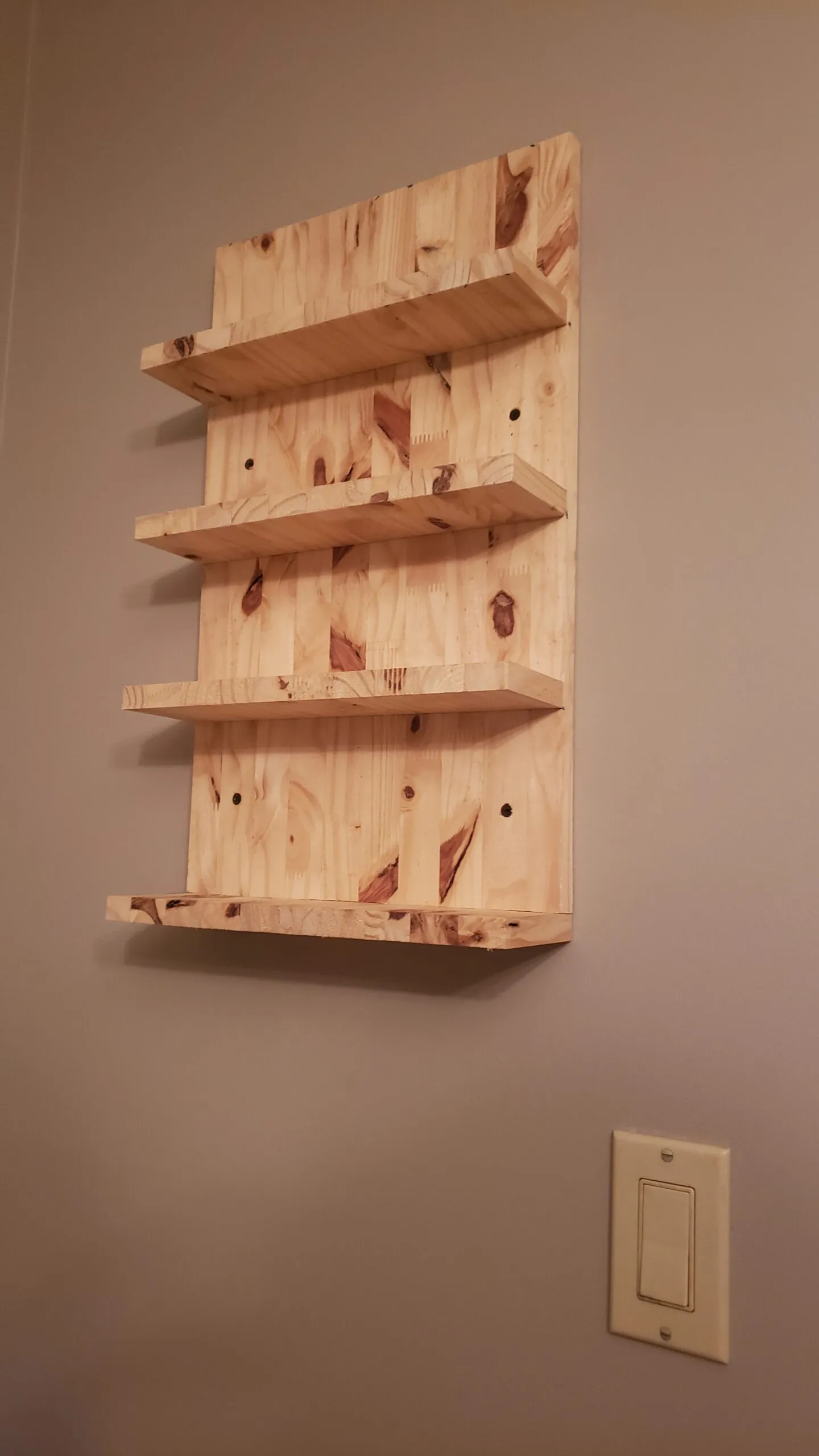
If you’re looking for a practical and stylish way to organize your kitchen jars, building your own shelf is a rewarding and straightforward project. With a simple 4-cut design and the power of Blender for mockups, you can create a custom shelf that fits perfectly in your kitchen. Here’s how we did it.
Materials and Tools:
- Screws or nails
- Wood glue (optional)
- Sandpaper
- Tools: Saw, drill, measuring tape, level, screwdriver

Step 1: Planning and Design
- Measure Your Space: Start by measuring the area where you want to place your shelf. This will help you determine the dimensions of your shelf.
Step 2: Preparing the Wood
- Cutting the Boards: Based on your mockup, cut the wooden boards into the following pieces:
- Sanding: Sand all the cut edges and surfaces to ensure they are smooth and ready for assembly.

- Reinforcement: For extra stability, you can add additional screws or use corner brackets.
Step 5: Installation
- Organize Your Jars: Arrange your kitchen jars on the new shelf, keeping frequently used items within easy reach.

Conclusion:
Building a kitchen jar shelf with this simple 4-cut design is an easy and rewarding project that adds both functionality and charm to your kitchen. Using Blender for mockups allows you to visualize your design and make adjustments before cutting any wood, ensuring a perfect fit for your space. Enjoy your new shelf and the satisfaction of a DIY project well done!







